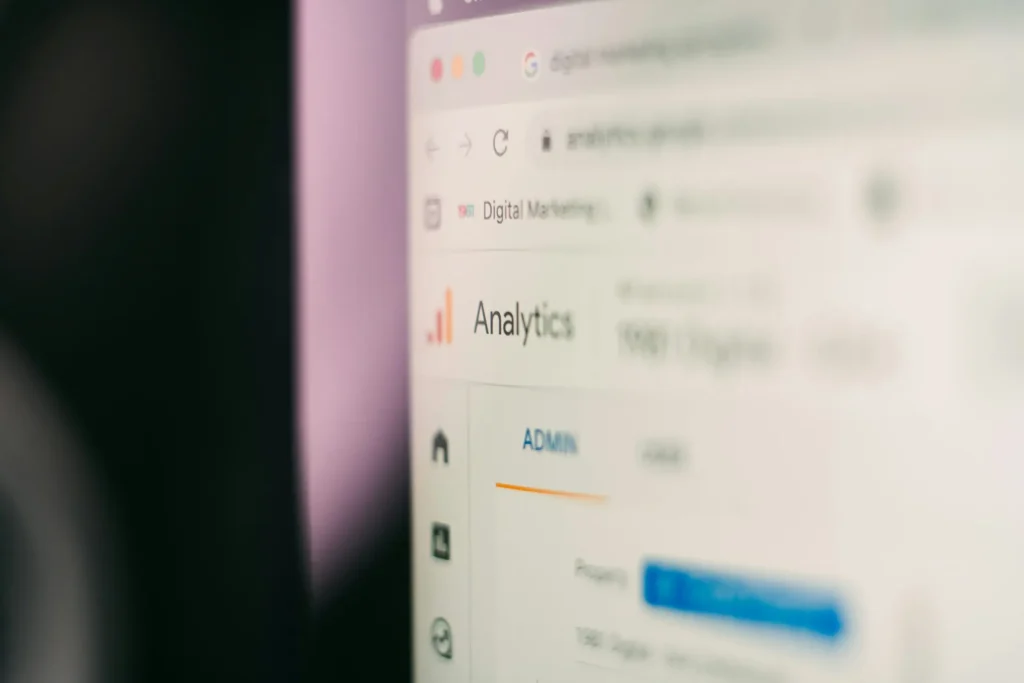How Important is Page Speed for SEO Rankings?

You’ve spent countless hours crafting the perfect website, meticulously designing each page, and curating your content to perfection. You’re confident that your online presence will captivate your target audience and drive conversions. But then, your potential customers start to arrive, and something unexpected happens – they quickly click away, their attention already diverted to the next shiny object on the internet.
What’s behind this frustrating scenario? The relentless march of technology and the ever-shortening attention spans of today’s digital consumers.
In a world where we’re bombarded with endless stimuli, users have become accustomed to instant gratification and lightning-fast loading times. If your website fails to keep up, you risk losing them to your competitors before they even have a chance to engage with your brand.
SEO Importance

The great thing is, there actually IS a way to solve that challenge: in the paradigm of page speed optimization. In this in-depth post, we dig into why page speed is a key facet of SEO and how you can make your website as fast as lightning.
Once all is said and done, you will walk away from this journey with an irrefutable understanding of just how critical page speed really is in helping you succeed online — as well as practical advice on how to easily beat out your competitors and captivate the hearts of your customers more than ever before.
This guide will explore why page speed is important, the implications of having (or lacking) a fast website, and actionable advice about how to improve your site’s lightning-fast loading times.
If you are a beginner to web development or just trying new things out, creating your presence online is important for taking the next step in having an online site.
Understanding the Importance of Page Speed for SEO

What is Page Speed and Why It Matters
Page speed, also known as loading speed, is the time it takes for a web page to load and become fully interactive for visitors. This includes the time it takes for the initial HTML document to be downloaded, all resources used (images, scripts, CSS, etc.), and once its first paint is rendered, the page starts responding adequately based on user interactions.
Loading time is vital as it affects the experience of end users. In the ever-decreasing world of attention spans, we are all acutely aware that internet users now expect fast load times, and any lag can result in frustration, higher bounce rates, and lower engagement.
Conversion rate studies have proven that even a one-second delay in page load time can lead to a 7% loss in conversions, making speed an essential part of maximizing your presence online.
Read Also: Enhance Your Website’s Performance with a Complimentary Site Analysis
Google’s Emphasis on Page Speed as a Ranking Factor

Google realizes the fundamentals of speed when delivering a great user experience. The search giant has made page speed a critical characteristic of its ranking calculation, titled “Core Web Vitals.” These metrics (such as Largest Contentful Paint, First Input Delay, and Cumulative Layout Shift) give a high-level view of your website performance. These metrics are almost synonymous with good user experience.
Google has made it clear over the years, across various algorithm update announcements, that page speed matters—whether that was with its “Speed Update” in 2018, where Google started using mobile load time as a ranking signal for mobile searches. This step emphasized the increasing demand for mobile-first optimization as many users started using their smartphones to get online.
Historical Context and Updates
The importance of page speed in Google’s search algorithm has been well-established over the years. In 2018, Google rolled out its “Speed Update,” which was the first time that page speed was ever based on a ranking factor to be used for mobile search results.
Google had been beating the page speed drum for a while before that, having rolled out Accelerated Mobile Pages (AMP) in 2015 and made it one of its ranking factors for desktop search results back in 2010.
Google made these updates to provide a seamless user experience. If your page is slow, the searcher’s journey gets off to a rocky start, and frustration may ensue with plenty of bouncing.
How Page Speed Affects User Behavior and Conversion Rates

Page load speed can be the difference between you and your competitors. People will use the sites which load more quickly and have a better experience.
You can take a big step up from your competitors by improving website page load speed. In addition, faster load times can lead to higher engagement levels and reduce bounce rates, which in turn means better conversion rates, too. Research actually shows that a one-second delay in page load times results in a 7% reduction in conversions.
Better, since Google now considers page speed as a rank element (and corporations that pay attention to performance have an all-around quicker internet site), you could outrank the slower competition. This means more visibility, organic traffic, and, hence, a broader scope of displaying your products or services.
Strategies to Improve Page Speed

While there is no one-size-fits-all solution for achieving better page speed results, it becomes apparent that faster-loading pages are rooted in a mix of technical changes and design with mobile-first implementations, emphasizing the importance of optimizing site speed. Using the right tools and best practices in improving your website performance can greatly affect, if not boost, SEO rankings.
Technical Best Practices to Minimize Cumulative Layout Shift
One of the best techniques for speeding up your images and improving load speed is optimizing all pictures on a website. To optimize the images for the web, compress image files (like JPEG and PNG) and choose an appropriate dimension for each image to fit in the element that you used on the layout.
Enabling Browser Caching: It caches a specific type of file (Images, .js, and .css) in the web browser for a certain period or amount, prohibiting downloading it once again every time a user visits your site.
This slows down the page even more (in simple terms), and therefore, you need to have a view of how your server functions, meaning it needs reactivity. This means optimizing your server configuration, using a CDN, and making sure that your hosting company is reliable (and scalable).
This seems like a straightforward answer to boost my page’s speed, but it is multi-layered and will require you to have extensive knowledge of technical optimization techniques. Proper tools and best practices can tremendously elevate your website performance, leading to improved SEO ranking results.
Read Also: Smart SEO Strategies for Modern Dating Websites
Image Optimization: Compressing and Serving the Right Files

Optimizing your images is one of the simplest yet most effective methods to speed up a page. This means compressing images using the right file format (e.g., JPEG, PNG, WebP) and scaling your photos to fill web page placeholders.
By far, the largest contributor to slowing down load times is image size, and images typically account for the majority of a website’s overall file sizes. Optimized images load much faster, which, in turn, increases your page speed and leads to a better user experience.
Leveraging Browser Caching for Faster Repeat Visits
Another crucial step in improving page speed is to enable browser caching. This allows your users’ web browsers to store certain resources (such as images, CSS, and JavaScript files) for a specified period. When a user revisits your website, these resources can be loaded from the user’s local cache rather than having to download them from the server with each page load.
By implementing effective browser caching strategies, you can significantly reduce the time it takes for your website to load, particularly for repeat visitors. This not only enhances the user experience but also contributes to better SEO performance, as search engines prioritize websites that provide a fast and efficient browsing experience.
Reducing Server Response Time: Optimizing Your Infrastructure with a Content Delivery Network
Reducing server response time is also essential for improving page speed and avoiding slow loading issues. This can be achieved by optimizing your server’s configuration, using a content delivery network (CDN), and ensuring that your web hosting provider is reliable and scalable.
By minimizing the time it takes for your server to respond to a user’s request, you can improve the overall page load time and provide a more responsive website experience. This is particularly important for users who are located far from your server’s physical location, as the distance can significantly impact the response time.
Mobile Optimization

Proper Website Mobile Optimization: In a mobile-centric world today, this is probably the most abused and skipped aspect. Pin, using Excamplet, the fastest load method for a mobile user experience, will use Accelerated Mobile Pages (AMP), an initiative backed by Google that offers fast and lightweight mobile experiences.
With AMP, you can decrease your page load times, which improves user engagement and increases Google search rankings, as queries are gauged on page speed. Understanding how speed affects SEO is crucial, as slow-loading websites can lead to increased bounce rates and decreased user engagement, negatively impacting search rankings and conversions.
Accelerated Mobile Pages (AMP): Delivering Faster Mobile Experiences
Leveraging Accelerated Mobile Pages (AMP) is one of the best tactics for mobile optimization. AMP is available as part of a Google-backed initiative to deliver slimmer and quicker mobile products.\
AMP implementation offers improved page load times, user engagement, and listing Amp pages in Google’s mobile search results.
AMP speeds up load times by compressing the HTML, CSS, and JavaScript of a page so it is much lighter than normal behind-the-scenes web stuff that hasn’t been downloaded. This improves the user experience and goes along with Google’s focus on page speed as a ranking factor.
Responsive Design: Ensuring Optimal Performance Across Devices
Aside from AMP, you should also ensure your website is responsive and appears properly on different screen sizes. A responsive design allows your website to change its layout, content, and functionality for different devices (ideal viewing experience across all types of devices).
This will help keep your website lightweight and fast-loading, which generally means better engagement from users who return bounce rates more often, resulting in improved SEO performance.
Read More: Enhancing User Engagement: SEO Insights for Dating and Hookup Apps
Monitoring and Maintaining Page Speed

Website speed optimization is a continuous process, and you need to measure your website’s performance continuously. That includes monitoring your website’s speed metrics regularly, looking for ways to improve them, and making changes accordingly when needed to maintain a favorable position in search engine results pages.
Key tools and metrics here include Google PageSpeed Insights, an in-depth resource that provides specific suggestions for improving your website’s performance. It gives you actionable advice on optimizing the loading time.
By staying vigilant and proactively addressing any page speed-related challenges, you can ensure that your website continues to deliver a seamless user experience, ultimately driving better SEO results and business outcomes.
Leveraging Google PageSpeed Insights for Actionable Insights

Google PageSpeed Insights is one of the best web performance and speed monitoring tools available. This completely free tool analyzes your website specifically on the performance side and provides detailed recommendations to fine-tune technical optimization/best practices.
When you test your website with Google PageSpeed Insights during normal routines, it will identify speed-related issues. And guess what? Yes, of course; you can fix them all if you want to offer a seamless user experience from the SEO end.
Continuous Monitoring and Iterative Improvements
Optimizing page speed is an ongoing process that requires monitoring and improvements. This might include frequent performance testing of your site, solving new problems as they arise, and keeping current on the latest best practices and trends in our industry.
A proactive, iterative approach to optimizing page speed will keep your site competitive among users and search engines, leading you toward better business results that alleviate most speed challenges.
Conclusion

As the digital landscape has continued to evolve, page speed now represents an important key performance indicator for your internet presence. Understanding the value of page speed, integrating proven tactics for optimization, and applying due care & attention to client-side performance monitoring will set you on course for sustained SEO success in today’s ultra-competitive online space.
Optimizing your website for PageSpeed isn’t a one-time deal, but the benefits are worth it. Following each of the methods I have given you in this guide is guaranteed to enhance your search engine rankings. Not only will that but it has also been built with professionalism, giving an impressive user experience on a day-to-day basis.
So, what are you waiting for? So, you had better have your things in order and start working on them soon to get an edge over the others. Speed Optimization begins today and upscales your business!





